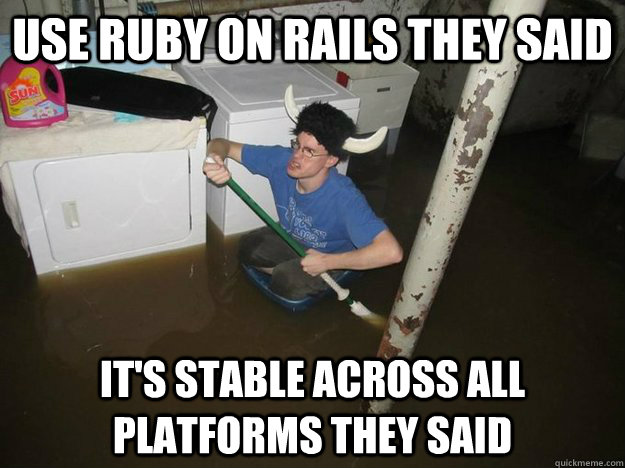Development frameworks
Putting a jet engine on your web projects
August 7th, 2015

If you’ve ever worked on a development project, the odds are that you already worked with a framework. There are hundreds of frameworks out there, you can use a web framework to build web applications, a network framework to build network servers or a graphics framework to build graphical applications.
The initial vision was that standard features and parts of a website or application are built thousands if not millions of times across the Internet: signup processes, interfaces to input data, account management and so forth. Instead of repeating this code many, many times, frameworks help you minimize the work by having a lot of “pre-coded” functionalities, so that you can accomplish more with less, better structured code. Instead of developing and maintaining your own code you use a library of code maintained and improved by thousands of developers belonging to the framework community.
A Ruby framework
One of the most popular web framework out there is Ruby on Rails, based on ... Ruby! It implements the use of web standards such as XML for data transfer, CSS/HTML for display and JavaScript for user interfacing. Rails also implements conventions for easier collaboration and maintenance. Released in December of 2005, almost ten years ago, it’s popularity is huge in the startup community, but RoR is also used for projects in big companies such as eBay. Great websites such as Basecamp, CodeCademy, Pitchfork, Shopify and GitHub are built on Ruby On Rails.
JavaScript frameworks
JavaScript frameworks are also a big deal in software development. The progress brought by JavaScript in recent years is tremendous, and being a great front-end software developer today means being a master in JavaScript, but also in one of its framework. There are 4 major frameworks: backbone.js, ember.js, react.js and angular.js, the latter being by far the most popular.JavaScript frameworks offer a more responsive user experience, for example when clicking on a button the framework can only load a section of the page, instead of reloading the entire page. This kind of feature allowed SoundCloud (link: SoundCloud) to pull off a killer user experience where you can navigate sections and playlists on the side-bar while keeping the player running smoothly.
Frameworks are awesome! But there is a big downside to them: they force you into a way of thinking and coding. It’s a bit like building a WordPress blog: you can get it up and running in minutes but a lot of features/improvements are inaccessible unless you know how to customize your WP site, i.e. you know HTML/CSS and PHP, a big deal if you only wanted to showcase your week-end brunch photos.
Some say frameworks make it too easy and make developers lazy, it’s a debate happening all over the internet. But if you want to test your app idea and get it up-and-running in a few weeks, frameworks will be the way-to-go.
I hope this helped you understand the core concept of framework a little better. Any feedback most welcome!